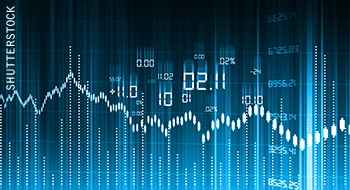

It’s official: now, there really is an ETF for everything.
On Friday, on the NYSE, the ETF Industry Exposure & Financial Services ETF (TETF) began trading. The fund, which has an expense ratio of 0.64 per cent, will seek to track the Toroso ETF Industry Index. That index provides exposure to public companies such as index and data companies, and exchanges, among others.
This is the first ETF to provide this type of exposure.
The timing of the fund’s release is intriguing, says Mark Yamada, president and CEO of PUR Investing, who’s surprised it didn’t happen sooner. “ETFs have been around for a long time, but have just achieved what’s called the tipping point” for adoption and innovation.
He adds the theory of diffusion of innovation, which was developed by E.M. Rogers in 1962, finds that over time, an idea or product gains momentum and then diffuses, or spreads, through a population. “We in the ETF space have paid attention to this theory for some time,” says Yamada, given it shows that there could be, from this point forward and over the next three years, accelerating investor adoption of ETFs.
Read: Medical marijuana ETF to trade on the TSX
As a result, getting involved in the ETF industry now could mean getting involved “in growth that’s exponential; not that the growth hasn’t been pretty good up to now.”
Will such a fund come north? Unlikely, says Yamada: “We’re too small in Canada [to have a similar fund]. The major ETF industry players in Canada are generally foreign companies or [they’re] controlled by other companies, and others are not public. So Canadian investors are going to have to go to the U.S. to get their exposure” to the industry’s growth.
In its release, New-York based asset manager Toroso Investments notes that U.S. ETF assets have grown from US$1.2 trillion to US$2.7 trillion.
Continued growth
Two trends that will further ETF industry growth are legislative and regulatory change, and the continued rise of robo-advisors, says Yamada. “The fiduciary rule in the U.S. has been delayed, but the larger players are so committed that it’s going to happen. The effect will be this: if there is an mutual fund and an ETF equivalent to that mutual fund, the fiduciary will probably have to select the ETF over the mutual fund.”
In Canada, a best interest standard from CSA–and/or a statutory best interest duty from Ontario–could mean “you will likely not be able to select a mutual fund if there’s a [comparable] ETF sitting beside it,” says Yamada.
Read: Canadian assets in ETFs reached US$84 billion in 2016: report
When it comes to robos, many are “exclusively using ETFs. Also, the investing public is catching on, with CRM2, how much are they paying for mutual funds, and that there are lower-cost alternatives. All of these things are working toward the tipping point,” where ETF growth explodes.
As a result, prices are getting “crushed.” As such, “the [likely] beneficiaries are advisory firms that will benefit from the use of ETFs to improve their offerings, but that also have other services. These are firms that are generally in the advice business.”
Breakdown of ETF Industry Index
Constituents of Toroso’s ETF industry index are dividend into four tiers:
- Tier 1 makes up 50 per cent of the index’s exposure and consists of companies that participate heavily in the industry, such as BlackRock, Charles Schwab, Invesco, State Street and WisdomTree.
- Tier 2 makes up 25 per cent of the index’s exposure and also consists of companies that heavily participate in the industry but more indirectly. That includes KCG Holdings, NASDAQ and Intercontinental Exchange, Inc.
- Tier 3 makes up 15 per cent of the index’s exposure and consists of companies with moderate levels of participation in industry. That includes Bank of New York Mellon, U.S. Bancorp, FactSet and Ameriprise Financial.
- Tier 4 makes up approximately 10 per cent of the index’s exposure and consists of companies that are new or participating in a smaller way in the ETF industry, relative to their overall focus. It includes names such as as Morningstar, Eaton Vance, Goldman Sachs, Legg Mason and Citigroup.
Read: Liquidity needs drive Canadian investors to bond ETFs
Yamada notes, “The index [is] pretty well-constructed. None of the players are so completely exposed to ETFs, with the exception of WisdomTree–which is all ETFs, all of the time. So in terms of diversification of assets, it’s pretty good.”
He adds State Street “is involved with almost every ETF issuance because of [its] position as custodian, while Charles Schwab is killing it [and] sneaking up in the robo space.” He says BlackRock, which has long been dominant, will have to “manage [its] reduced market share” as new ETF entrants pop up. “They’re going from 100 per cent [market share] to something less–so they have an interest that’s important to their bottom line–but [ETF industry competition] isn’t going to kill them.”
This article originally appeared on Benefits Canada’s companion site, Advisor.ca.
